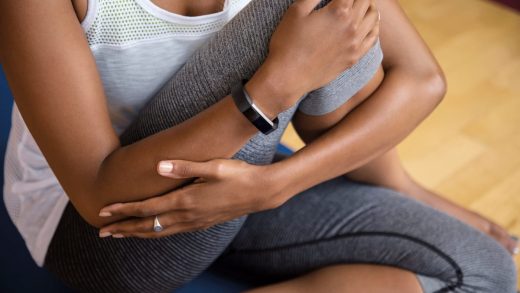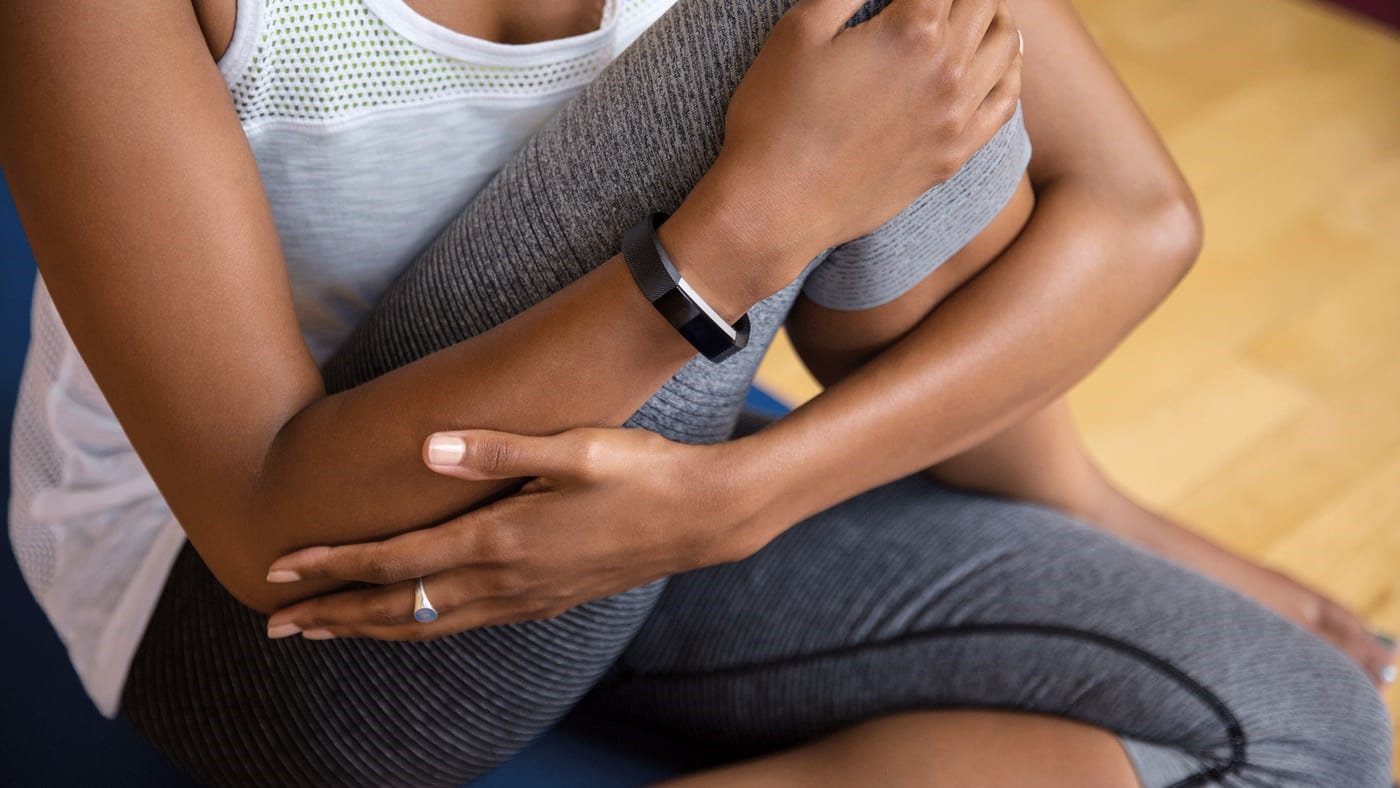How Fitbit is trying to transform healthcare, and itself
Fitbit has a problem on its hands. This is not news. After riding high on a 2015 IPO, Fitbit’s main product, fitness-tracking wrist wearables, have become less appealing to consumers while smartwatches –especially the Apple Watch–have become more popular.
James Park, Fitbit’s CEO, once told me there was room in the world for both fitness trackers and smartwatches, but that looks far less true today than when he said it. Things changed when Apple began marketing the Watch as a fitness tracking device in 2016. After that, many health-conscious (and would-be health-conscious) consumers began choosing between Fitbits and Apple Watches. Fitbit kept selling trackers, but fewer of them. There’s far more money to be made in smartwatches; and Apple, in familiar fashion, came to own at least 60% of that market.
After its IPO in mid-2015, Fitbit posted several quarters of triple-digit and double-digit sales growth. But it’s seen sales shrink in its last seven quarters, and that’s translated into net losses in the previous six. It owned 21.5% of the total wearables market in 2016, but its share slipped to 13.3% in 2017, then to 11% in the first quarter of 2018, according to IDC.
Fitbit’s reaction to this situation is two-fold. It’s begun to sell smartwatches. The latest Versa smartwatch does many things the Apple Watch does but costs far less, at only $200 (the latest Apple Watch starts at $329). Sales of the Versa look promising; Fitbit said earlier this week that it had moved more than a million Versas since the device’s launch in mid-April.
It’s also begun talking a lot about finding new revenues outside the tough direct-to-consumer market. Among Park’s hopes now: that its fitness trackers will play a vital role in the healthcare delivery system.
For years the company has sold Fitbits to employees via corporate wellness programs. Measuring and promoting wellness has become more important to large employers as more of them provide their own health insurance. More recently Fitbit has been supplying devices to health insurers (like United Healthcare) and their members to promote wellness and help keep members from needing expensive health services. Now Fitbit is directing much of its time, money, and strategy toward presenting the value of its devices, services, and data to healthcare providers like hospitals.
“The evolution of these devices is leading us to something much more than a consumer fitness device and a really great ‘nice to have’ to something that’s more critical to the healthcare ecosystem,” the chief executive told me during a recent interview at Fitbit’s San Francisco offices.
Act 2: Watching Your Health, Physical And Mental
One of Fitbit’s advantages in healthcare is proximity. Health wearables are very personal devices–they remain pressed against our bodies throughout the waking hours and beyond. They may constitute the caregivers’ only digital link to the patient after she has left the hospital and returned to normal life. Fitbit devices could be used as “a mass screening tool–a check engine light for the body, a background scanner,” Park said.
For instance, a cardiologist might ask her congestive heart failure patients to wear a Fitbit to track activity levels and heart rate. Congestive heart failure patients have a high rate of readmission to the hospital after they’ve gone home from their surgery, and it is very costly. The sensors in the Fitbit might alert doctors to signs of trouble.
Fitbit thinks its wearables can also provide valuable sleep data to caregivers. Fitbit’s first smartwatch, the Ionic, contained a relative blood oxygen sensor that can detect sleep apnea. (Sleep apnea causes frequent interruptions in breathing, which shows up in intervals of reduced oxygenation of the blood.) The new Versa smartwatch has this feature, too.
Other clinical use cases are more future-tense. Park suggests that wearables could one day be used for medication adherence. “If your doctor started to see that activity level start falling over time that might mean your drug stopped working or you stopped taking your medication,” he said. “So if your doctor is alerted at that time that’s a very timely intervention that can prevent more serious issues down the road.” Patients’ failure to take meds correctly is a huge expense to the healthcare system, and a leading cause of hospital readmissions.
Park also told me Fitbit wants to play a role in mental healthcare. “Your activity patterns–your heart rate, your other patterns that our device tracks–could be strong signals as to whether your behavior should be looked into or checked on by a mental health professional,” he says. He stipulates, however, that the company’s work in mental health-related applications is “still in the R&D stage.”
Tooling Up For Big Health
In order to better position itself to do business with healthcare providers, Fitbit recently acquired Boston-based Twine Health, and announced a new partnership with Google Cloud.
Twine Health developed a platform on which health coaches can develop plans with users to help them lose weight or quit smoking. Other more clinical coaches might use the platform to help a person with diabetes or hypertension manage their condition. Health coaches can deliver advice and other asynchronous communications to people participating in employer wellness programs. The magic of the platform, according to Twine, is that it maintains a personal connection between a user and their coach, and engenders a sense of accountability. Users can also loop in members of their family or their doctor, which enhances the social aspect of health improvement.
Twine also developed a dashboard to display a user’s activity data in a simple way. That information can be shared with doctors, nurses, and other care providers. It uses a system of green, yellow, and red to quickly signify that a marker is safe, borderline, or out of range and potentially dangerous.
Before being acquired by Fitbit in February, Twine licensed its platform to employers, insurers, and health providers. For the time being, it will continue doing so. But Twine and Fitbit have also been working together–and with a group of both companies’ existing healthcare provider clients–to bring the Twine Health and Fitbit assets together on one platform, Twine Health founder and CEO Dr. John Moore told me. Moore now serves as Fitbit’s Medical Director.
Fitbit has a thriving social community, as well as a popular feature that lets users issue challenges to one another. If those assets are rolled into the Twine platform, Moore says, it may be possible to offer participants either individual coaching or group experiences.
“You can have groups of participants from the same employer, or groups of people who have the same health conditions,” Moore explained. “They can make challenges to each other.” Groups and challenges, in other words, might further amp up the social aspect of wellness, which numerous studies have shown to work.
The Fitbit/Twine pairing has a compelling data aspect. Fitbit brings a large pile of user activity, food, and sleep data, while Twine brings more clinical data like blood glucose levels and blood pressure readings. Fitbit’s data comes either directly from the sensors in its devices, or is entered by users into the Fitbit app or website. The Twine data comes from connected medical devices (like blood pressure cuffs), from electronic medical records users self-report it, or from users who self-report it on the platform.
Moore points out that Fitbit has a data science and machine learning team that can work with the combined data sets to tease out meaningful connections that can help clinicians care for patients. For instance, the data team may find a real connection between activity levels and blood sugar levels in people with diabetes. Or it might find links between blood pressure levels and diet or sleep patterns.
In the future, Fitbit hopes to leverage Google’s machine learning capabilities to draw even deeper insights from the combined data sets. For instance, machine learning algorithms might be able to see indications in the data that a user is at high risk for a certain disease, then proactively treat them for it.
The Google machine learning is just one of the deliverables in Fitbit’s recently-announced partnership with Google Cloud. The combined Fitbit and Twine Health services and data will be served up to healthcare providers via Google’s cloud and healthcare API. Google could also give Fitbit the scale it needs to integrate with large hospitals and insurers. It’ll also give Fitbit a HIPAA-compliant data repository that can connect with the electronic medical records (EMR) systems used by health providers.

Fitbit Being Fitbit
Fitbit could really benefit from a strong business-to-business play in healthcare to fill the revenue gap left by its declining business-to-consumer fitness tracker business. The company’s unit sales had shrunk year-over-year for six quarters in a row before the company reported a slight growth in the first quarter of 2018. Fitbit stock shed almost a quarter of its value during the first quarter of 2018, and many analysts hope the company will break even at best during this year.
CEO Park and others have been telling the company’s healthcare story for some time now, but investors’ hopes are tied far more closely to the smartwatch business. Despite the announcement of Fitbit CFO Bill Zerella’s departure this week, Fitbit’s stock has been on a tear (up 18%) since the news of robust Versa sales dropped on Monday.
Still, Park will continue to tell the healthcare story. The addressable market is certainly there. “If you analyze the whole opportunity you can see that the amount is in the hundreds of billions of dollars,” Fitbit’s Park said, referring to the cost savings potential for the health system. But many digital health companies have proved far better at recognizing the opportunity than actually capitalizing on it.
Not only is the healthcare industry unimpressed with California tech companies, but it’s slow to embrace new things and it expects new vendors to hunker down through a long acceptance process. Today Fitbit says “less than 10%” of its revenue derives from business-to-business device sales.
“It’s not about where we are now, it’s about where we’re going to be later,” says IDC analyst Ramon Llamas. Llamas says overall Fitbit is positioning itself for the opportunity in the right ways. “Fitbit is a company that’s mapping its future, and playing to its own strengths at the same time,” the analyst said. “They are not trying to be a multimedia company; they are trying to champion health and fitness to keep people healthy and saving money with the help of some pretty compelling devices.”
And the Fitbit healthcare story feels good for more than just business reasons. The current president eats Kentucky Fried Chicken and Doritos. Obesity and diabetes are still rampant killers in the U.S. And the U.S. spends more on healthcare than any other country in the world. Getting the healthcare system more invested in proactive, versus reactive, treatments–and giving it the tools to do it–may be the country’s best hope for easing down its massive yearly healthcare bill.
Fast Company , Read Full Story
(5)



